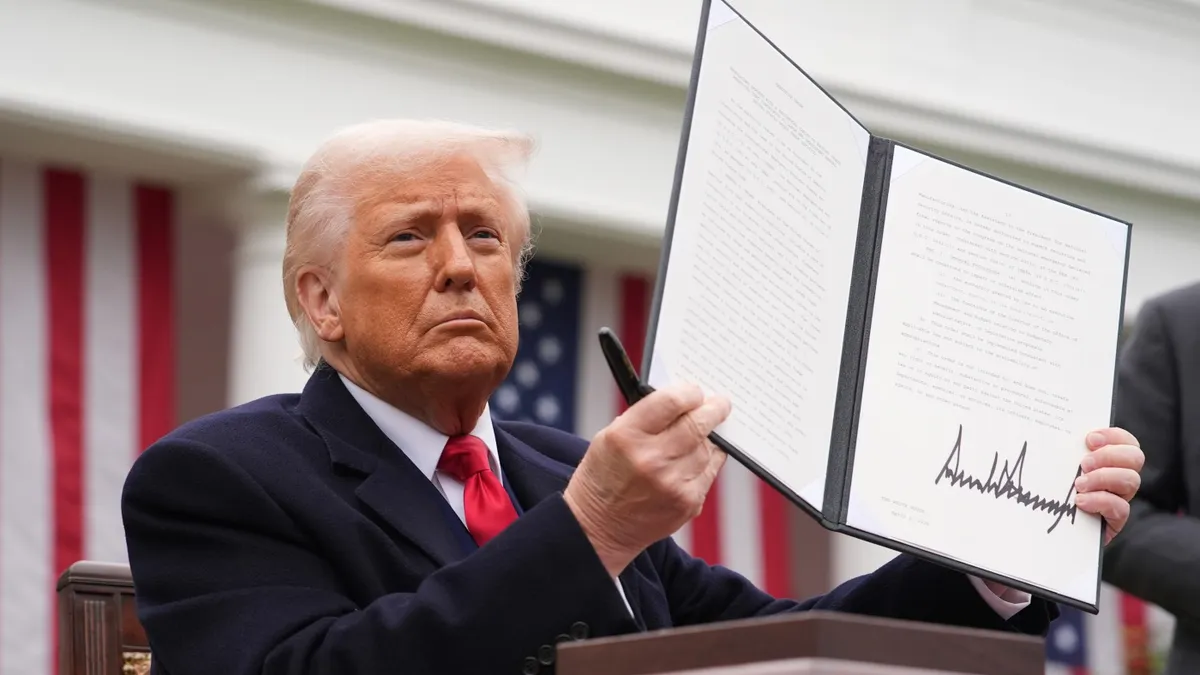
The tariff era has officially begun. Following several delays and adjustments, most of President Trump's tariffs were implemented this week, imposing a significant 15% tariff rate on a majority of countries. Notably, certain nations, including India, may face even higher import taxes. According to the latest calculations from the Budget Lab at Yale, the U.S. has now established the highest average tariff level since 1933, with an average rate of 18.6%. But what does this mean for the U.S. economy and for consumers? Here, we address some of the most frequently asked questions regarding the implications of these tariffs.
One of the most common questions we receive revolves around price increases. Unfortunately, the answer is that higher prices are likely to be unavoidable. Most economists believe that the costs associated with these tariffs will be distributed among the exporter, the importing companies, and the consumers. Currently, consumers have not fully felt the impact of these tariff costs, as U.S. companies have largely absorbed the expenses. For instance, General Motors reported in July that tariffs had already cost them approximately $1.1 billion in the previous quarter, a cost they chose to absorb, impacting their profits. However, this cannot continue indefinitely. Ultimately, companies will need to negotiate with their overseas suppliers to absorb some costs, resulting in price hikes for consumers.
This leads to another frequently asked question: How much will prices actually rise? The truth is, we wish we had a concrete answer. Projections exist, such as the Budget Lab at Yale's estimate that prices for clothing and textiles may see significant increases, with shoe prices potentially rising by 39%. However, consumers typically do not think in terms of percentages; they want to know how much more their favorite products will cost. The reality is that the responsibility for paying tariffs will likely be shared, meaning a 15% tariff on imports from the European Union doesn't automatically translate to a 15% increase in the price of Italian olive oil. Retailers have some flexibility in how they price their products, which complicates the matter further. The Budget Lab estimates that the average household could incur an additional cost of around $2,400 this year due to tariffs, but this is merely an estimate based on current knowledge.
When considering the overall impact, it is clear that inflation will increase. However, it is essential to maintain perspective. Consumer prices experienced a 2.7% increase in July compared to the previous year, which is a more substantial rise than in the previous three months. Economists predict that inflation will continue to climb as tariffs are enforced. Nevertheless, even with these increases, inflation rates are expected to remain significantly lower than the 9.1% annual inflation rate recorded in 2022, which was the highest in over four decades. The concern is that rising inflation can negatively affect consumer sentiment. Raphael Bostic, President of the Atlanta Federal Reserve, noted that inflation has become a daily concern, which could shape how consumers and businesses strategize their market engagement moving forward.
The effects of these tariffs could also impact job security, which tends to hit individuals hardest. Recent data from the Labor Department revealed that only 73,000 jobs were added to the economy in July, and gains from May and June were significantly revised down. Despite the unemployment rate rising to 4.2% in July, which is historically low, economists anticipate that hiring will slow down this year as companies adjust to higher tariff costs and become more cautious about investments. While significant layoffs have not yet been observed in the U.S. economy (with exceptions in the federal sector), there are signs that finding new employment is becoming more challenging, particularly for recent graduates. A weaker job market can lead to consumer anxiety, prompting individuals to reduce their spending.
All these factors contribute to concerns about economic growth, with most economists predicting a slowdown. However, many forecasters, including a recent survey by The Wall Street Journal, do not anticipate a recession. Interestingly, stock markets have remained resilient, with the S&P 500 and Nasdaq recently reaching record highs as investors remain optimistic about the U.S. economy's ability to withstand Trump's tariffs. Even if the economy manages to avoid a recession, one thing is certain: from businesses to households, the effects of these tariffs will be felt across the board.